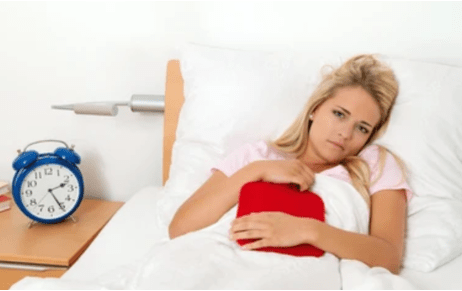INTRODUCTION When a woman experiences her period or menstruates, the menstrual cycle begins. A woman's…
Recent Change in America Invents Act
Congress passed the America Invents Act that makes major changes to the existing U.S. patent system. President Obama signed the Act into law on September 16, 2011. What does this mean for Indian Inventors and Research corporates who already filed Patents already or want to get a new patent file in the US?
The first impact is that the cost of filing a patent application is being increased and the U.S. Patent and Trademark Office (USPTO) fees will increase by 15% in accordance with an interim fee schedule.
Benefits for Small scale Industries/Individual Inventors:
Well Congress, maybe of political pressure, left this part of section untouched. If you qualify as a “small entity” (small business, independent inventor, or a nonprofit organization), your fees continue to be reduced by 50%.
New Entry – Micro Entity
Additionally, Congress created a new “micro entity” option that gives the inventors a 75% reduction in fees if he qualifies according to the new act. To qualify as a “micro-entity”, one has to: (1) be a “small entity”; not be a named inventor on more than 4 previously filed US utility applications; his/her gross income is 3 times or less than the Census Bureau reported median household income for the preceding calendar year (currently $50,022), and he/she have not assigned or licensed his/her invention to a non-macro entity, or (2) earn the majority of his/her income from an institution of higher learning or assigned or license his/her invention to an institution of higher learning.
First to file – Now in the US
Starting April 2013, the U.S. will be awarding patents to the first inventor to file the application at the USPTO. It will no longer matter if he/she were the first to think of and make the invention before a second inventor who invents the same or substantially similar invention. He/she will not get the patent if his/her patent application is filed second. There is one exception. If he/she can show the USPTO that the inventor of the first-filed application derived that invention from him/her or one of his/her co-inventors in a newly created derivation proceeding, then the patent should be awarded to him/her. The USPTO will be issuing rules about derivation proceedings in the coming months.
One Year Grace Period – Do’s and Don’ts
As per the existing system, Inventors had a grace period of one year to file the patent application in the U.S. from the date he/she or any other party disclosed the invention to the public, provided he/she will be able to show the USPTO that he/she conceived of the invention before that publication. As per the new rules, from April 2013, even that one year grace period only applies if he/she is the one who disclosed the information. If a third party discloses the invention at any time before he/she files his/her application, then he/she will not get a patent.
Advantage – Third Party
There are three levels where a third party can attack your Patent Application/Granted Patent.
Level 1: Implementation of Peer to Patent Ideas
Peer to patent is a new idea revolutionized in Australia, US, and UK patent offices, where any public party can examine the published applications to cite a prior art in order to help the examiner and express speed up the prosecution time of patent applications. Although it was a pilot project, now the congress wants it to implement on a Real-time basis. This means, from Sep 2012, any third party can submit prior art to any patent application in the prosecution stage for consideration by the patent examiner before issuance of the first rejection of one or more of the claims.
Level 2: Post-grant Opposition
Any third party can challenge a patent in a new post-grant review proceeding at the USPTO. But, they must file the petition within 9 months from the date of the patent is granted. If the USPTO accepts the petition to institute the post-grant review, then the USPTO must make a decision on the challenge within one year of the request. This new post-grant review starts one year from the date of enactment (September 2012), but can only be filed against patents with an effective filing date on or after a date that is 18 months after enactment, i.e., on or after April 2013.
Level 3: Inter Parte Examination – Any time
A third party could challenge the validity of a granted patent through an inter partes review regardless of when it was issued. The inter partes review is replacing inter partes reexamination one year after enactment (September 2012). No longer will the alleged basis of unpatentability have to be “new,” i.e., not previously considered by the USPTO. The earliest that a petition for inter partes review can be filed is 9 months after the date of grant of your patent, or if a post-grant review is filed, then after the post-grant review is completed. If the USPTO accepts the petition to institute the inter partes review, then the USPTO must make a decision on the challenge within one year of the request.
Patent Marking: Restrictions to Private Parties that can sue Patent Owner:
In recent years, many lawsuits have been filed exploiting provisions in the patent marking law that permit private plaintiffs to sue a patent owner whose patent markings on his product are claimed to be false and be given one-half of the civil penalties awarded by the court. For example, if a particular patent had expired but was still mentioned in patent markings on a product, the patent owner could be sued for false marking. Effective immediately upon the date of enactment, marking a product with a patent number that covered the product but that has since expired will not give rise to liability for false marking. Importantly, only the US government will be able to sue for civil penalties. The only private parties who can sue for damages for false marking are those who can show they suffered a competitive injury as a result of the false marking. The false marking provisions of the America Invents Act will apply to all cases pending on the date of enactment, as well as to cases begun on or after the date of enactment, which will likely result in the dismissal of many private plaintiff lawsuits.
Key Takeaways:
Recent Change in America Invents Act can do both good and bad to the Inventors and R&D corporates. Understanding the act and to quickly catch up with the new act is the best way to lead in this IP race.
About the Author: Mr. Veera Raghavan, Patent Specialist at IIPRD and can be reached at [email protected]



